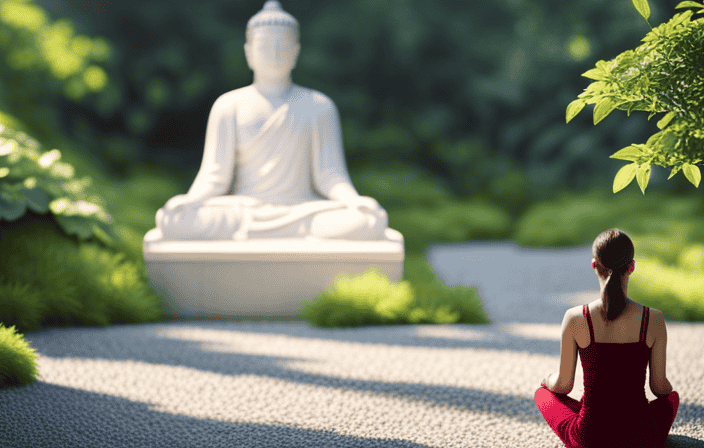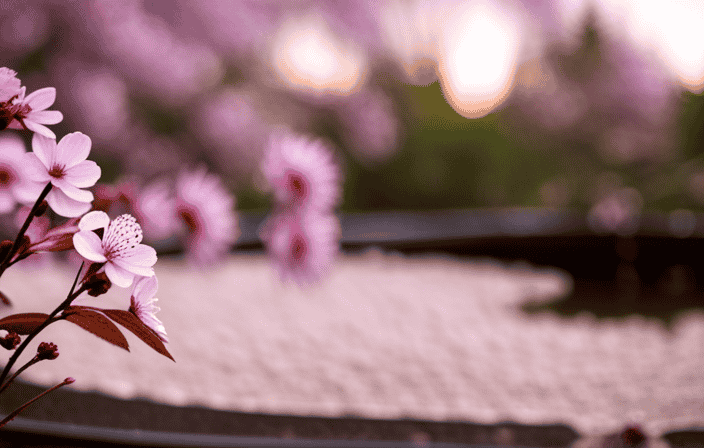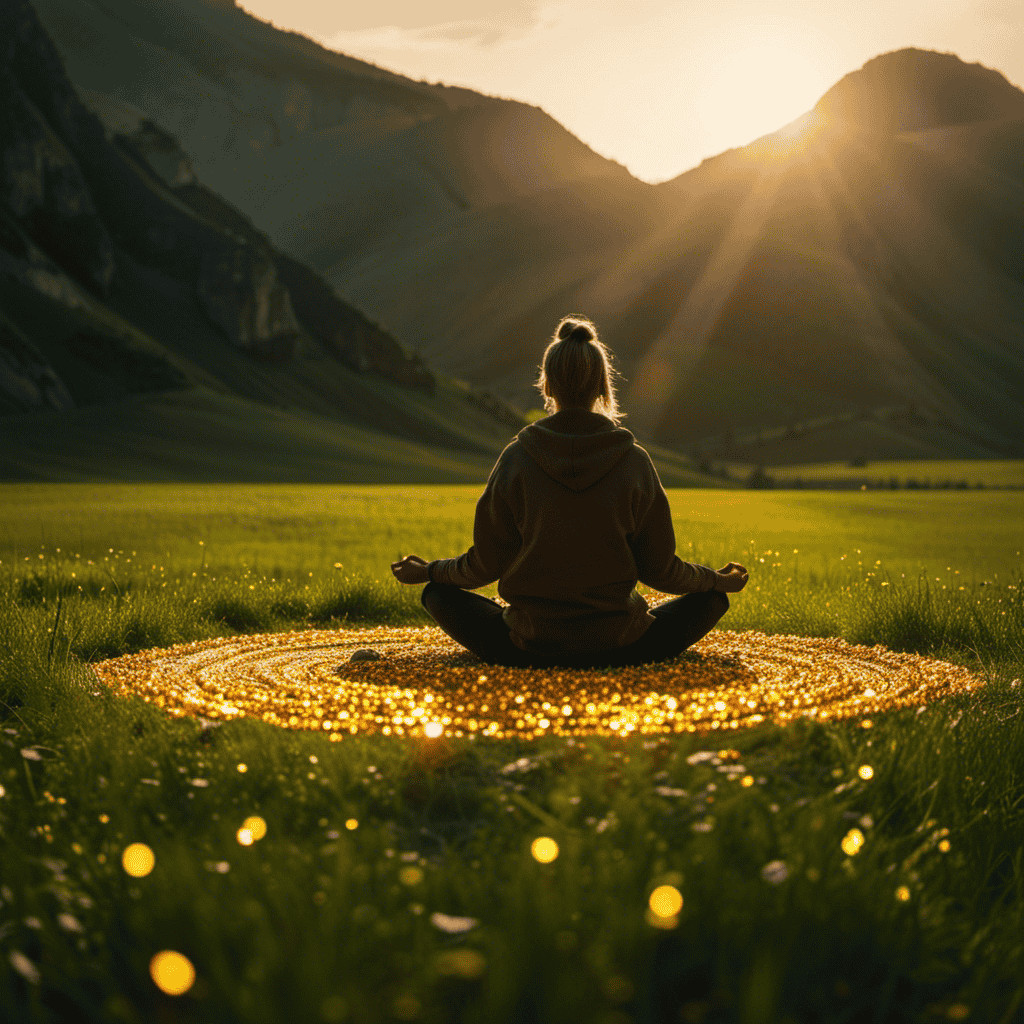Did you know that the simple action of an eye twitch could have a more profound, spiritual significance?
It may surprise you to learn that in various cultures, eye twitching is believed to be a message from the universe. Right eye twitching is said to bring positive energy and good news, while left eye twitching is associated with difficult times.
While the scientific evidence behind these beliefs may be lacking, many people find meaning and guidance in these spiritual interpretations.
In this article, we will explore the spiritual significance of eye twitching, its potential cultural interpretations, and how it can be seen as a part of our personal growth and self-reflection.
Key Takeaways
- Right eye twitching is often associated with receiving positive energy or good news in various cultures.
- Left eye twitching is commonly linked to bad energy or difficult times.
- Belief in the spiritual significance of eye twitching is widespread, despite the lack of scientific evidence.
- Eye twitching can be connected to spiritual journeys and the opening of the third eye chakra.
What is Eye Twitching?
Eye twitching is when the muscles around my eye involuntarily contract, and it is usually not a cause for concern. It’s a strange sensation, this fluttering sensation that comes and goes without warning. Sometimes, it feels like a tiny drumbeat against my eyelid, a reminder of the intricate workings of my body.
I can’t help but wonder if there’s more to it than just a random muscle spasm. Perhaps, there is a deeper meaning, a spiritual significance that I have yet to uncover. Maybe, it’s a message from the universe, a sign of something greater at play.
I find myself contemplating the hidden messages behind this seemingly insignificant occurrence, eager to explore the mystical realm that lies within.
Causes and Triggers
Identifying the root causes and triggers of this involuntary muscle movement allows me to better understand and address its underlying factors.
When it comes to eye twitching, there are several potential causes and triggers that can contribute to this condition. Stress and fatigue are common culprits, as they can weaken the muscles around the eyes, leading to involuntary movements.
Eye strain and dryness are also frequent triggers, often resulting from prolonged screen time or inadequate lubrication. Additionally, nutritional deficiencies can play a role in abnormal muscle contractions, while allergies and infections can irritate the eyes, causing twitching.
By recognizing and addressing these factors, such as managing stress levels, taking breaks from screens, maintaining a balanced diet, and practicing good eye hygiene, I can effectively manage and alleviate my eye twitching symptoms.
Understanding the Spiritual Meaning
Understanding the deeper meaning behind my right eye’s persistent twitching has piqued my curiosity about its connection to spirituality.
As I delve into the spiritual significance of eye twitching, I am fascinated by the various interpretations across different cultures. In Chinese and Indian beliefs, right eye twitching is seen as a positive sign, indicating the reception of good news or positive energy. On the other hand, Westerners perceive it as a stroke of good luck, while Africans associate it with impending doom.
While scientific evidence may be lacking, I find it intriguing how these cultural beliefs have persisted throughout time. It makes me wonder if there is a deeper connection between our spiritual journeys and the involuntary movements of our eyes.
Perhaps, by exploring the significance of eye twitching, I can gain further insight into my own personal growth and self-reflection.
Managing and Preventing Eye Twitching
When it comes to managing and preventing my right eye from twitching, I have found that making lifestyle changes and practicing proper hygiene habits can greatly alleviate the symptoms.
Taking care of my overall well-being has had a significant impact on reducing the frequency and intensity of eye twitching. Here are some practices that have helped me:
- Prioritizing relaxation and stress management techniques, such as meditation and deep breathing exercises.
- Ensuring I get enough quality sleep each night to prevent fatigue and muscle weakness.
- Taking regular breaks from screen time and practicing eye exercises to reduce eye strain.
- Keeping my eyes hydrated by using lubricating eye drops and avoiding dry environments.
- Maintaining a balanced diet and addressing any nutritional deficiencies that may contribute to muscle contractions.
By adopting these habits, I have not only experienced a decrease in eye twitching but also a sense of empowerment and control over my own well-being.
It has allowed me to become more attuned to the signals my body sends and to prioritize my self-care.
Lifestyle Changes to Reduce Twitching
To reduce the annoying twitching in my right eye, I made drastic lifestyle changes that have made a world of difference.
I realized that stress and fatigue were major triggers for my eye twitching, so I prioritized self-care and relaxation. I started practicing daily meditation and deep breathing exercises to alleviate stress.
Additionally, I made sure to get enough sleep each night, aiming for at least eight hours. I also made changes to my diet, incorporating more fruits, vegetables, and lean proteins to ensure I was getting the necessary nutrients to support my eye health.
I became more conscious of my screen time and took regular breaks to rest my eyes.
These lifestyle changes not only reduced the frequency of my eye twitching but also improved my overall well-being.
Cultural Beliefs and Interpretations
During my journey to understand the cultural beliefs surrounding eye twitches, I discovered that different interpretations exist based on one’s cultural background.
It is fascinating how something as simple as an eye twitch can hold such varied meanings across different cultures.
In Chinese and Indian traditions, right eye twitching is seen as a positive sign, symbolizing good news or messages from a higher power.
On the other hand, Westerners view it as a stroke of good luck, while Africans perceive it as a forewarning of impending doom.
These beliefs highlight the power of cultural perspectives and how they shape our understanding of the world around us.
Exploring these interpretations has allowed me to appreciate the diversity of human beliefs and the complex ways in which spirituality intertwines with our everyday experiences.
Self-Reflection and Personal Growth
As I delved deeper into the cultural beliefs and interpretations surrounding eye twitching, I couldn’t help but reflect on my own experiences. It made me realize that self-reflection and personal growth play a crucial role in understanding the spiritual significance of eye twitching.
It’s not just about blindly accepting the interpretations of others, but rather taking the time to explore our own inner journey.
In this process of self-reflection, I discovered three important insights:
-
Each person’s experience with eye twitching is unique and personal. It’s not just about the cultural or spiritual beliefs associated with it, but also about what it means to us individually.
-
Eye twitching can serve as a gentle reminder to pay attention to our physical, mental, and emotional well-being. It prompts us to take a step back, assess our lives, and make necessary changes.
-
Embracing personal growth allows us to tap into our intuition and higher self. It helps us develop a deeper understanding of the messages that eye twitching might be trying to convey.
By engaging in self-reflection and personal growth, we can gain a more profound understanding of the spiritual significance of eye twitching and its impact on our lives.
When to Seek Medical Attention
Seeking medical attention for persistent eye twitching is crucial to ensure proper diagnosis and treatment, as it’s always better to be safe than sorry. While there are spiritual beliefs surrounding eye twitching, it is important not to solely rely on them when it comes to our health. Consulting a medical professional can help determine the underlying cause of the twitching and provide appropriate guidance for treatment.
To illustrate the importance of seeking medical attention, consider the following table:
| Symptoms | Possible Causes |
|---|---|
| Persistent eye twitching | Neurological disorders, such as blepharospasm or hemifacial spasm |
| Eye twitching accompanied by other symptoms, such as blurred vision or drooping eyelids | Nerve damage or eye muscle problems |
| Eye twitching lasting for more than a few weeks | Chronic stress, fatigue, or underlying medical conditions |
By consulting a healthcare provider, they can conduct a thorough examination, review medical history, and potentially recommend tests or referrals to specialists. Remember, taking care of our physical well-being is just as important as nurturing our spiritual growth.
Frequently Asked Questions
What are some alternative remedies or practices to manage and prevent eye twitching?
To manage and prevent eye twitching, I find that practicing stress-reducing techniques like meditation and deep breathing helps. Additionally, ensuring proper rest, hydration, and nutrition, along with regular eye exercises and breaks from screens, can be beneficial.
Are there any specific spiritual rituals or practices associated with eye twitching in certain cultures?
In certain cultures, eye twitching is believed to have spiritual significance. For example, in Chinese and Indian traditions, right eye twitching is seen as a sign of positive energy or good news. However, it’s important to note that these beliefs lack scientific evidence.
Can eye twitching be a sign of a spiritual awakening or heightened intuition?
Eye twitching can be a sign of a spiritual awakening or heightened intuition. It may indicate an opening of the third eye chakra and a deeper connection to one’s spiritual self.
Are there any specific crystals or gemstones believed to help alleviate eye twitching and enhance spiritual awareness?
Crystals and gemstones like amethyst and lapis lazuli are believed to alleviate eye twitching while enhancing spiritual awareness. Their calming energies and connection to the third eye chakra can promote balance and clarity.
Is there a connection between eye twitching and the opening of the third eye chakra?
Yes, there is a connection between eye twitching and the opening of the third eye chakra. Eye twitching can be a sign that energy is flowing through the third eye, indicating a heightened spiritual awareness.










